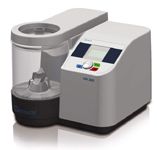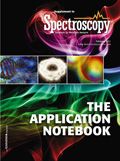Fat Analysis in Food and Feed with NIR
Fat and other nutritional values can easily be determined by NIR analysis. However a proper sample preparation beforehand is essential for a correct result.
Fat and other nutritional values can easily be determined by NIR analysis. However a proper sample preparation beforehand is essential for a correct result.
The fat content is one of the most important parameters for the quality control of food and feed. On the one hand, the fat content contributes greatly to the nutritional value of a product; on the other hand, some fats (e.g. milk fat or cocoa fat) are quite expensive components and should therefore be used economically.
Fat Analysis Methods
There are various methods of quantitative fat analysis. Which method is applied depends on the sample material, the required accuracy and the time frame. Solvent extraction according to Soxhlet and Weibull-Stoldt are two of the classic methods but need a separate step to determine the fat content.
NIR Spectroscopy
In addition to the above mentioned classic extraction methods Near Infrared (NIR) Spectroscopy has established itself as an alternative. This method not only allows for the determination of the fat content within seconds, but also of further important parameters such as protein, humidity, and carbohydrates. Moreover, NIR spectroscopy is carried out without the use of chemicals and can be applied close to the production process. For quantitative NIR analysis, inhomogeneous samples will yield inaccurate results. If the concentration of fat is not distributed homogeneously, the results can vary greatly, depending on the part of the sample which was analyzed. To avoid this, it is important to carry out reproducible size reduction of the sample before it is measured in the spectrometer.
Size Reduction of Samples with a High Fat Content
To determine the fat content by NIR, it is necessary to prepare the sample beforehand. During the preparation process care must be taken that the fat content is not altered in any way. If size reduction is improperly conducted, then a loss of fat is unavoidable. Incorrect accessory configuration and operating parameters will inevitably lead to the loss of fat content; the residues will remain inside the grinding chamber and tools. The sample must then be rejected and the mill must be cleaned.

Figure 1: Grindomix GM 300.
The RETSCH Knife Mill Grindomix GM 300 (Figure 1) is preferably used for materials with a high fat content such as fish pellets, meat, sausages, or cheese. This mill grinds and homogenizes sample amounts of up to 4.5 liters through cutting and/or impact effects in a liquid-tight container. The final fineness and the degree of homogenization are determined by the variable speed. The mill provides reliable operation, reproducible results, and can be equipped with heavy-metal-free grinding tools. Figure 2 shows three ground dog food samples and a corresponding NIR spectrum. It takes only 1 min at 2500 rpm to grind 500 g of this sample to homogeneity in the GM 300. Within a few seconds it is possible to obtain a NIR spectrum which allows a reliable quantitative statement on the fat content of the sample.

Figure 2: Dog food pellets before and after size reduction and corresponding NIR spectrum.
Accurate and reproducible results are essential for proper sample preparation. This can be assured by using the correct equipment, which gently but effectively homogenizes the sample.
Retsch Inc.
74 Walker Lane, Newtown, PA 18940
tel. (866) 473-8724 or (267) 757-0351, fax (267) 757-0358
Email: info@retsch-us.com, Website: www.retsch-us.com

AI Shakes Up Spectroscopy as New Tools Reveal the Secret Life of Molecules
April 14th 2025A leading-edge review led by researchers at Oak Ridge National Laboratory and MIT explores how artificial intelligence is revolutionizing the study of molecular vibrations and phonon dynamics. From infrared and Raman spectroscopy to neutron and X-ray scattering, AI is transforming how scientists interpret vibrational spectra and predict material behaviors.
Real-Time Battery Health Tracking Using Fiber-Optic Sensors
April 9th 2025A new study by researchers from Palo Alto Research Center (PARC, a Xerox Company) and LG Chem Power presents a novel method for real-time battery monitoring using embedded fiber-optic sensors. This approach enhances state-of-charge (SOC) and state-of-health (SOH) estimations, potentially improving the efficiency and lifespan of lithium-ion batteries in electric vehicles (xEVs).
New Study Provides Insights into Chiral Smectic Phases
March 31st 2025Researchers from the Institute of Nuclear Physics Polish Academy of Sciences have unveiled new insights into the molecular arrangement of the 7HH6 compound’s smectic phases using X-ray diffraction (XRD) and infrared (IR) spectroscopy.